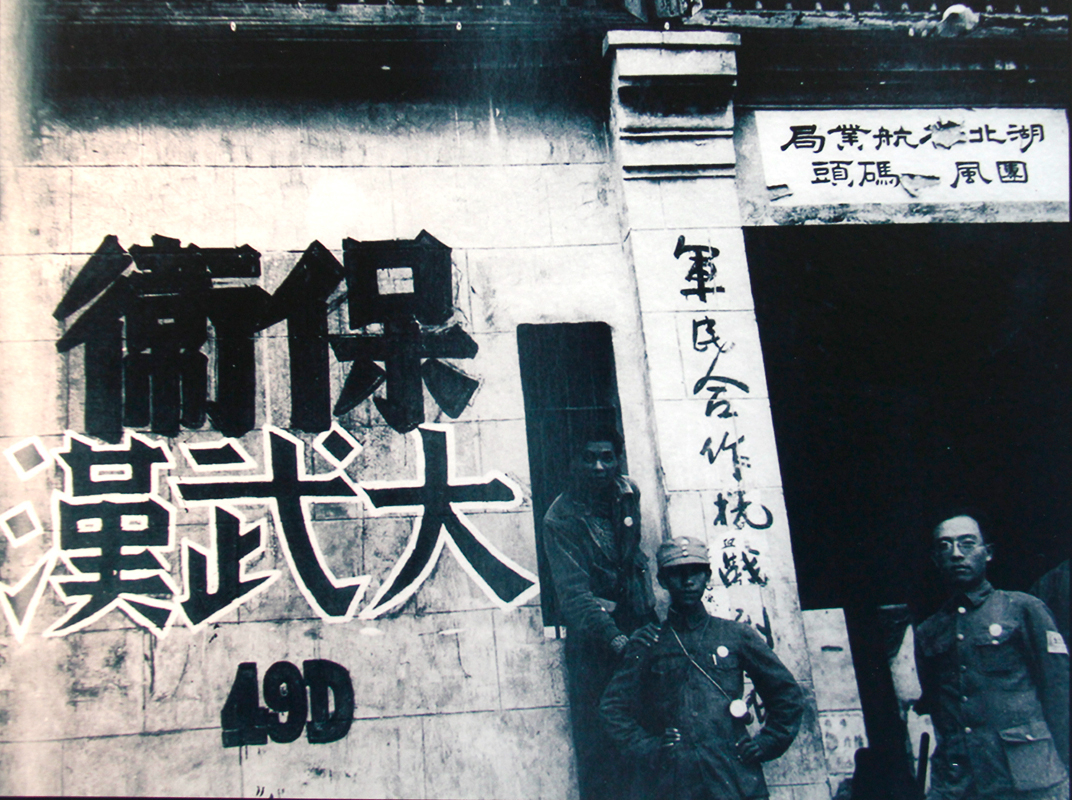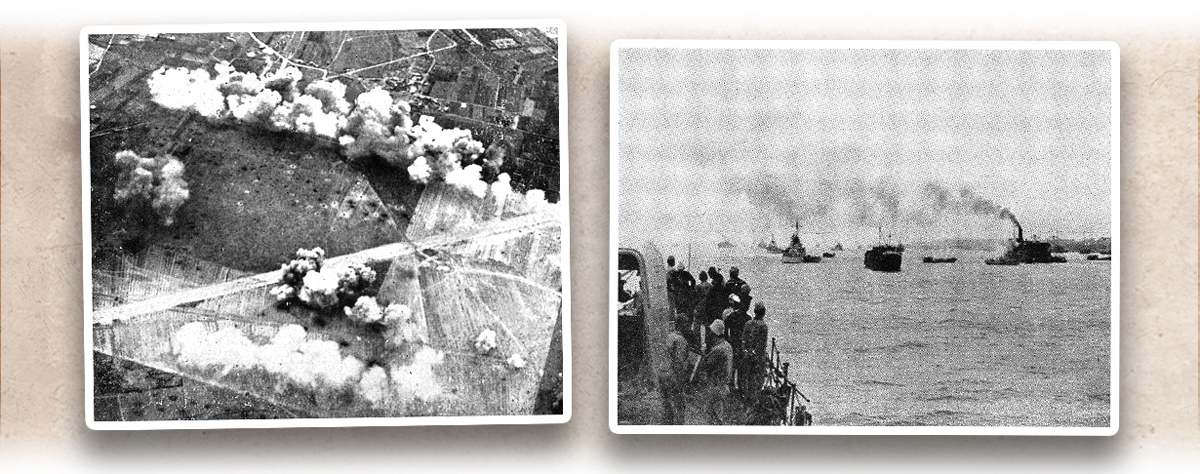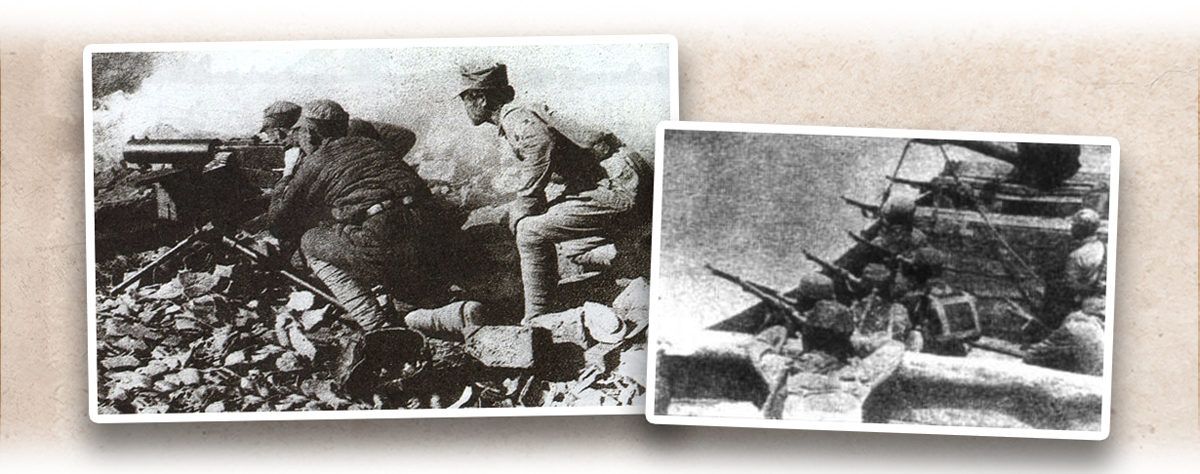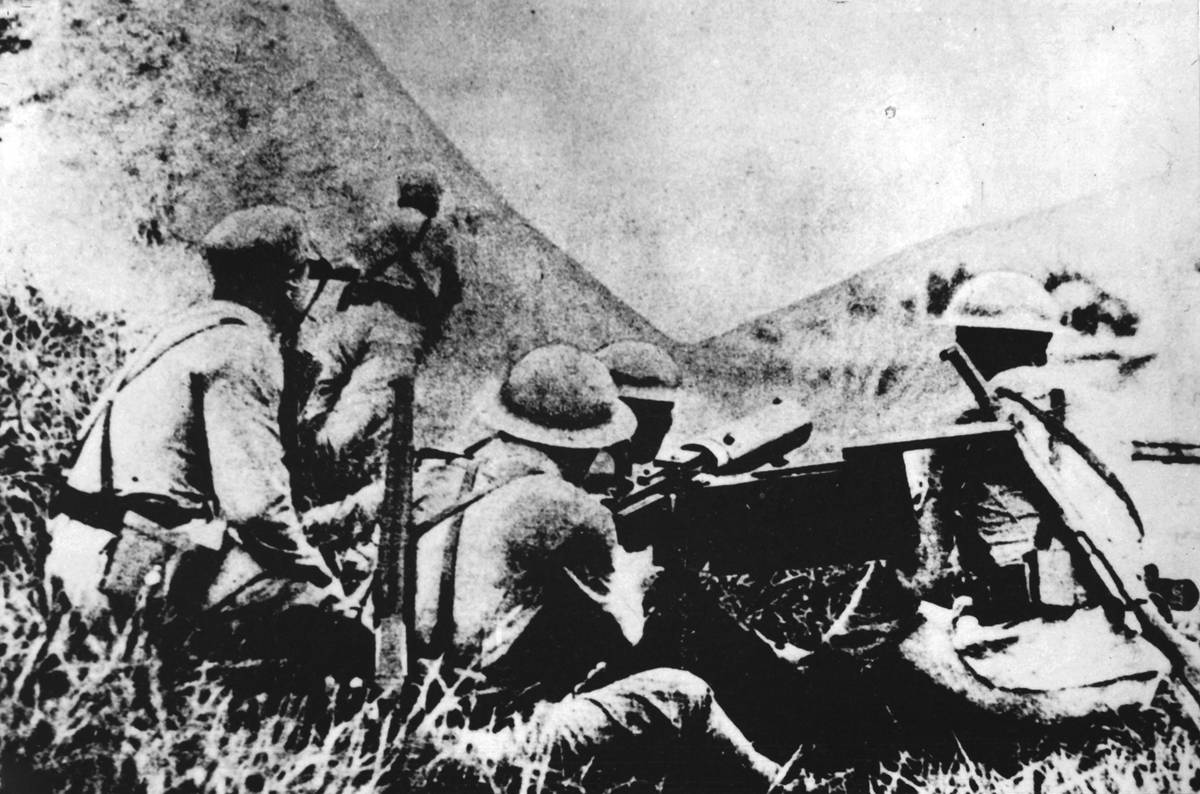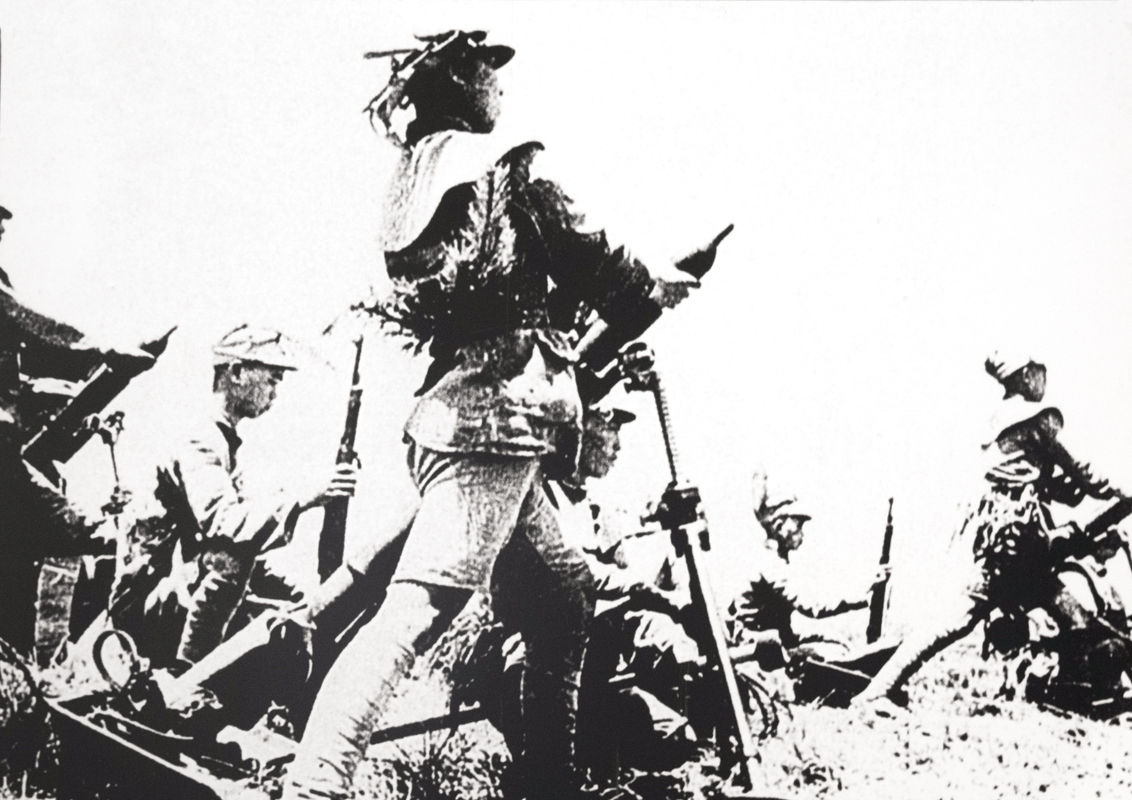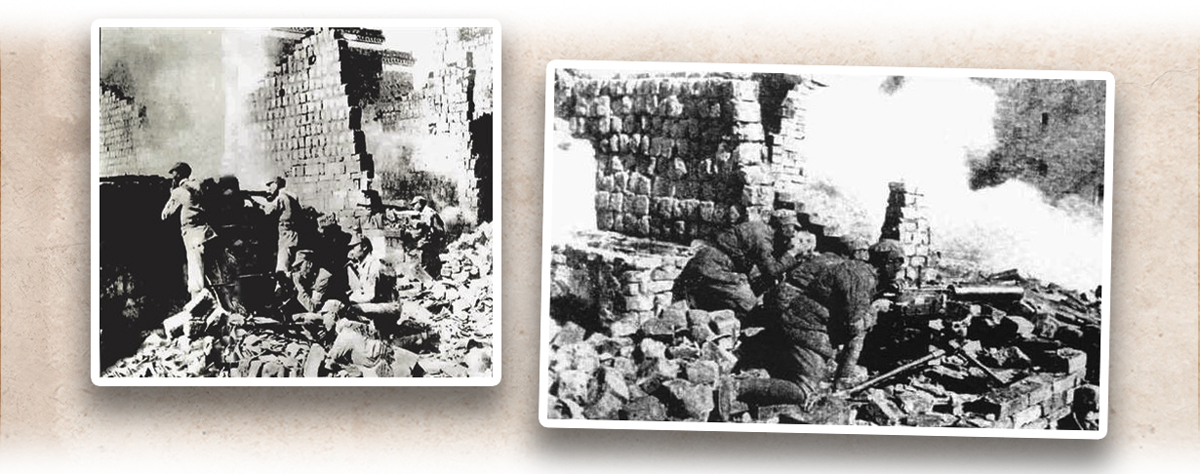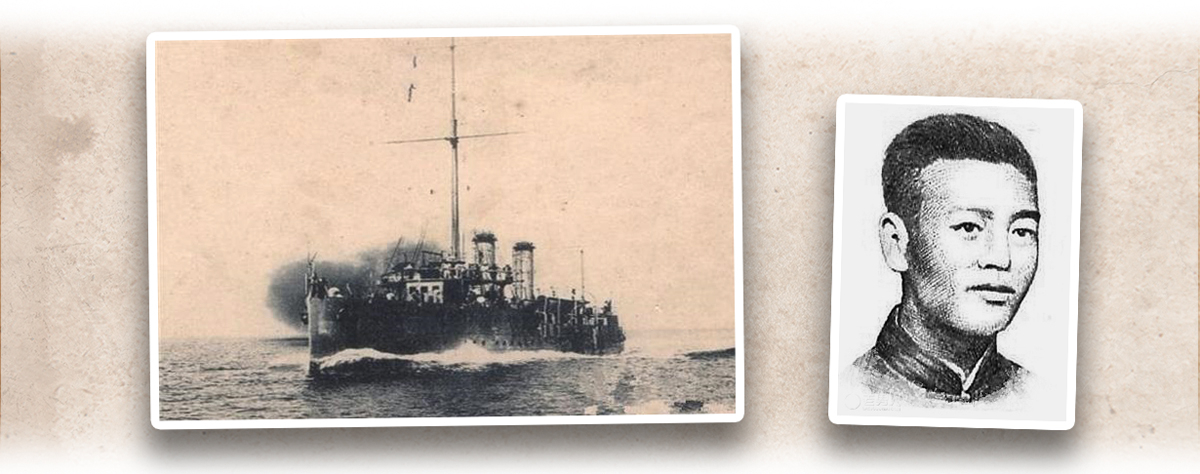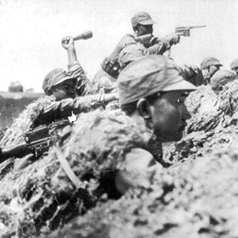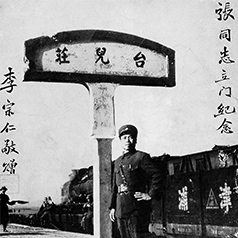The Battle of Wuhan (武漢會戰) is also referred to as the Defence of Wuhan (武漢保衛戰). It was another full-scale battle between the National Revolutionary Army (NRA) and the Japanese Army, and a major turning point in the war where China began its transition from retreating to contesting with Japan on even footing.
Wuhan is located at the heart of the south-central China and at the junction of the Beiping-Hankou Railway (平漢鐵路) and Guangdong-Hankou Railway (粵漢鐵路). In November 1937, the Nationalist Government moved some of its offices from Nanjing (南京) to Wuhan, and Japan was desperate to seize it for its strategic significance. Realising the ambition of its enemy, the Nationalist Government focused on deploying the defence of Wuhan commanded by Chiang Kai-shek (蔣介石). With the newly established 9th War Zone (directed by Commander Chen Cheng﹝陳誠﹞) and 5th War Zone (directed by Commander Li Zongren﹝李宗仁﹞) taking charge of the operation, numerous high-ranking commanders including Xue Yue (薛岳), Zhang Fakui (張發奎), Bai Chongxi (白崇禧), Li Pinxian (李品仙), Sun Lianzhong (孫連仲), and Zhang Zizhong (張自忠) converged in Wuhan for participation. They were joined by the provincial armies of Sichuan (四川) and Yunnan (雲南), naval and air forces employed. The Soviet Union also sent the Soviet Volunteer Group to aid China during the battle.
The battle involving 1.1 million NRA soldiers and 350,000 Japanese soldiers lasted for more than four months (11 June to 27 October 1938), with Wuhan and its neighouring provinces being the centre-stage battlefields. The Chinese soldiers fought tooth and nail in more than a hundred conflicts of different scales, inflicting 100,000 casualties on the Japanese Army at a cost of over 400,000 of their own. Although the Japanese Army succeeded in capturing Wuhan, its ambition of swiftly defeating China failed. Following this battle, China was to confront Japan on even footing.
|
|
China after all abandoned the three towns of Wuhan when the battled ended. Most of China’s major cities completely fell into the hands of Japan. Why was it marked as the end of the retreating phase and the beginning of a stalemate between the two sides? |
|
|
See answer below. |
Japanese warships and seaplanes on the Yangtze River (長江) in Jiangxi Province (江西) in June 1938. It was from this month that the Japanese Army began its fierce assault on the riverside city of Wuhan, which sits near the middle reaches of the Yangtze River. The NRA engaged in a desperate struggle with the Japanese Army in Wuhan and its neighbouring provinces, including Hubei (湖北), Jiangxi (江西), and Anhui (安徽).
On the wall outside the Tuanfeng Pier (團風碼頭) of the Hubei Province Shipping Industry Bureau, a slogan reads, “Guard the Great City of Wuhan”, reflecting the conviction of the Chinese people to defend the city during the Battle of Wuhan.
Japan mobilised its navy, army, and air forces, attacking the NRA with superior firepower during the Battle of Wuhan. Left: Japanese warplanes bombarding Hankow Airfield (漢口機場) in 1938. Right: Japanese warships firing at Wuhan from the Yangtze River.
The Chinese forces engaged their enemy valiantly during the Battle of Wuhan. Left: the NRA mounting a machine gun station amid the rubble. Right: the NRA defending the Yangtze River region.
The NRA shooting the Japanese Army with machine guns during the Battle of Wuhan.
The NRA shooting the Japanese Army during the Battle of Wuhan.
The NRA firing mortars at the Japanese Army on the Wuhan front line.
The NRA engaging the Japanese Army in a bitter street fighting in the rubble when defending Wuhan. The undaunted NRA was committed to guard its homeland even in the face of Japanese far superior firepower.
Apart from the army, China also mobilised its naval and air forces to defend Wuhan. The photos show the warship SS Zhongshan (中山艦) and its captain Sa Shijun (薩師俊). The SS Zhongshan was shot and sank, and Sa was sacrificed in the battle.
The warship SS Zhongshan, originally known as the SS Yongfeng (永豐艦), witnessed some significant historical events since it went into service in 1912. In 1922, Chen Jiongming (陳炯明) instigated a mutiny. Sun Yat-sen (孫中山) then took shelter on SS Yongfeng to escape from Chen, after which the warship was renamed SS Zhongshan in honour of Sun (Zhongshan was another name of Sun). The 1926 SS Zhongshan Incident almost led to the rupture of the Kuomintang of China (KMT, 中國國民黨) and the Chinese Communist Party (CCP, 中國共產黨). In 1938, the SS Zhongshan arrived in Wuhan to resist the Japanese invasion. It was severely damaged after the air bombardment and Captain Sa Junshi was also seriously injured but still insisted fighting. In the end, Sa died and the SS Zhongshan was shot and sank. In 1997, the SS Zhongshan was salvaged from the river and now rests in the Zhongshan Warship Museum in Wuhan, where the public can come to pay their respects.
Japanese soldiers declaring victory after capturing the military agency of the Nationalist Government in Wuhan. The Japanese Army captured Hankou (漢口) on 25 October 1938, Wuchang (武昌) on 26 October, and Hanyang (漢陽) on 27 October, ending the Battle of Wuhan.
Although Japan won the Battle of Wuhan, a heavy cost of 100,000 casualties was paid for the victory. Meanwhile, the NRA still managed to maintain its strength despite severe losses. China achieved the following strategic goals after the battle:
(1) Redirecting Japan’s offensive line of combat from north-south to east-west. This eliminated the crisis of being annihilated at the coastal regions faced by the main force of the NRA during the early stage of the battle.
(2) Stalling for time to relocate a portion of the strategic resources and military production equipment from the southeastern coastal regions to the rear area that augmented the resistance force for a protracted warfare. Japan’s ambition of “fast-assault and speedy victory” on China was smashed after the Battle of Wuhan. Japan was faced with a protracted warfare in China, leaving it in a disadvantaged position at the upcoming Pacific War.
|
|
China after all abandoned the three towns in Wuhan after the battle. Most of China’s major cities completely fell into the hands of Japan. Why was it marked as the end of the retreating phase and the beginning of a stalemate between the two sides? |
|
|
Indeed, during the first stage of the war (7 July 1937 to 27 October 1938), China employed the strategies of retreating or defending. Despite combating Japan head-on in locations like Shanghai (上海), Xuzhou (徐州), Tai’erzhuang (台兒莊), and Wuhan, and inflicting significant losses on the enemy, China was in general forced to retreat and adopt a defensive stance. Due to superior strength on the battlefield, Japan was able to capture more than half of China’s territory, including most of the regions in North China, East China, Central China, and South China. In China, most developed economic regions along its southeastern coasts and nearly all its major central cities fell into the enemy’s hands. However, Japan failed to achieve its ambition to destroy China within three months, and all the territory it acquired was plain region. Although the Nationalist Government was forced to move its headquarters to Chongqing (重慶) in the southwest, it was the mountainous terrain there that hindered Japan’s mechanised troops from advancing. As time stretched on, China was slowly able to put into effect its vast territory, huge population, and home advantage. Contrastingly, Japan was stretching its manpower and equipment, which were hard to recover due to inefficient transportation, lack of resources, and isolation. A long period of stalemate between the two sides was resulted. |
Source of most photos used in this feature piece: Fotoe and misc. photo sources.






